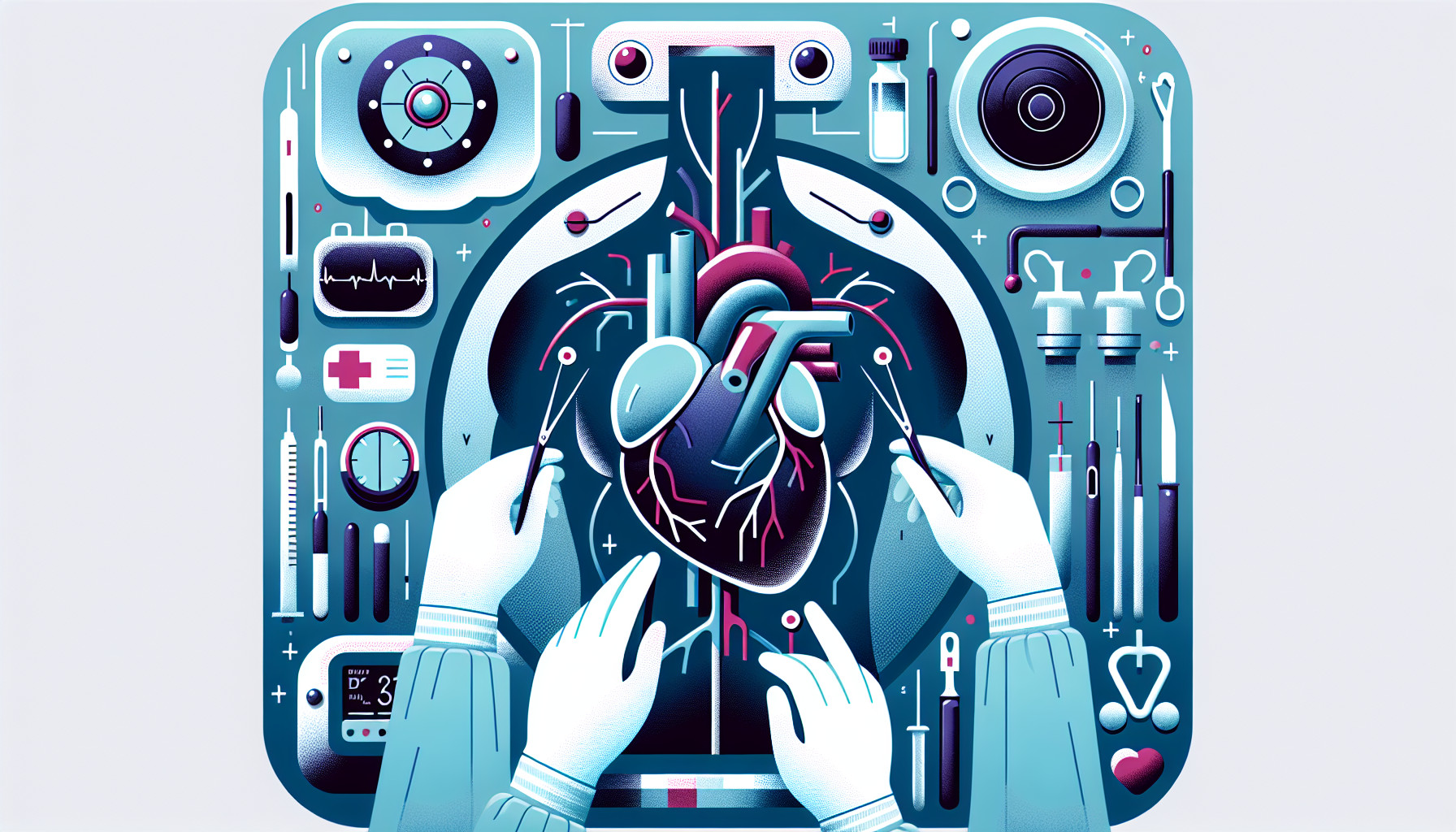Our Summary
This research paper discusses the clinical challenge of emergency heart scans (unplanned coronary angiography) following heart bypass surgery. The need for these scans after surgery can suggest problems like a lack of blood supply to the heart muscle, which can significantly affect a patient’s recovery. The frequency of these scans can vary a lot, depending on the hospital’s procedures and diagnostic criteria.
Key signs that a patient might need an emergency scan include high levels of certain heart-related chemicals in the blood, changes in heart tracing, and instability in blood flow. These scans are linked with higher short-term death rates and disease rates, but if complications related to the bypass surgery are identified and treated quickly, the patient’s survival chances can improve in the medium term.
The paper suggests that non-surgical procedures to improve blood supply to the heart are often a better treatment strategy than repeat bypass surgery. It calls for future work to improve risk assessment models, increase the use of non-invasive imaging techniques, and confirm the effectiveness of early intervention strategies through more studies. The paper highlights the importance of establishing standard criteria for diagnosing and managing a lack of blood supply to the heart after surgery to improve patient outcomes and healthcare efficiency.
FAQs
- What is unplanned postoperative coronary angiography (uCAG) following isolated coronary artery bypass grafting (CABG)?
- What are the key indicators for conducting an unplanned postoperative coronary angiography?
- What are the potential treatment strategies for graft-related complications identified via uCAG?
Doctor’s Tip
A helpful tip a doctor might tell a patient about coronary artery bypass is to closely monitor for any signs of postoperative myocardial ischemia, such as chest pain, shortness of breath, or abnormal heart rhythms. If any of these symptoms occur, seek medical attention promptly to prevent further complications. Additionally, follow all postoperative care instructions carefully to optimize recovery and reduce the risk of complications. Regular follow-up appointments with your healthcare provider are important to monitor your progress and address any concerns.
Suitable For
Patients who are typically recommended for coronary artery bypass grafting (CABG) include those with severe coronary artery disease, significant blockages in multiple coronary arteries, left main coronary artery disease, or those who have not responded well to other treatments such as medication or lifestyle changes. Additionally, patients with a history of heart attacks, chest pain (angina), or heart failure may also be recommended for CABG. Overall, the decision to recommend CABG is based on the individual patient’s medical history, symptoms, and the severity of their coronary artery disease.
Timeline
Before coronary artery bypass surgery, a patient may experience symptoms of coronary artery disease such as chest pain, shortness of breath, and fatigue. Diagnostic tests such as a stress test, echocardiogram, and coronary angiography may be performed to determine the extent of blockages in the coronary arteries.
After undergoing coronary artery bypass surgery, a patient will typically spend a few days in the intensive care unit for close monitoring. They may experience pain, fatigue, and difficulty breathing in the immediate postoperative period. Physical therapy and cardiac rehabilitation will be recommended to aid in recovery.
In the weeks and months following surgery, the patient will gradually regain strength and endurance. Cardiac medications will be prescribed to manage symptoms and prevent future complications. Regular follow-up appointments with the cardiac surgeon and cardiologist will be scheduled to monitor progress and address any concerns.
In the event of unplanned postoperative coronary angiography, the patient may experience complications such as elevated cardiac biomarkers, ECG changes, and hemodynamic instability. Prompt identification and treatment of graft-related complications through percutaneous coronary intervention (PCI) may be necessary to improve outcomes. Future efforts will focus on refining risk stratification models and validating early intervention strategies to enhance patient outcomes.
What to Ask Your Doctor
- What are the potential risks and benefits of undergoing coronary artery bypass surgery?
- How long is the recovery process expected to be after coronary artery bypass surgery?
- How often will I need to follow up with you after the surgery?
- What symptoms should I watch out for that may indicate a complication or the need for further intervention?
- What lifestyle changes should I make after the surgery to improve my heart health?
- What is the likelihood of needing an unplanned postoperative coronary angiography (uCAG) after the surgery?
- How will you monitor for postoperative myocardial ischemia (PMI) following the surgery?
- What are the treatment options if PMI is detected, and how will you determine the best course of action?
- How often will I need to undergo follow-up tests or evaluations to monitor for potential complications or graft-related issues?
- Are there any specific warning signs or symptoms that should prompt me to seek immediate medical attention after the surgery?
Reference
Authors: Wisniewski K, Concistrè G, Dell’Aquila AM. Journal: Medicina (Kaunas). 2025 Jul 9;61(7):1241. doi: 10.3390/medicina61071241. PMID: 40731869
